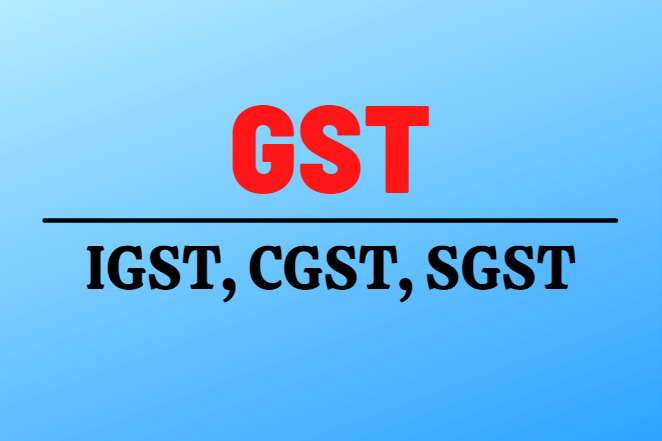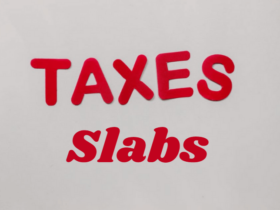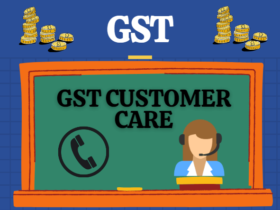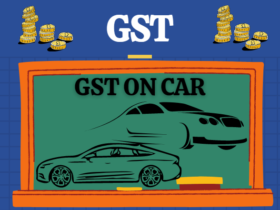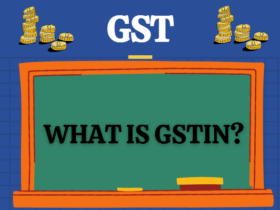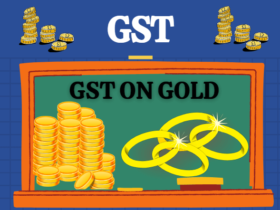IGST, CGST, and SGST the categories of GST recovered by the Central and State Governments on the basis of supply and consumption.
The Goods and Services Tax (GST) is a multi-tiered and destination-based indirect tax. Levied on the supply of goods and services.
GST is multilevel; Thus, it levied at each stage of the stage of production and destination-based. The tax collected from the endpoint of consumption and not from any point of origin.
It should note that GST a destination-based tax. Which received by the state in which the goods consumed but not by the state in which such goods manufactured.
Unlike earlier when there were many taxes like Central Excise, Service Tax, and State VAT, etc., there is only one tax under GST.
Based on these characteristics, the GST divided into three sub-taxes. Which are the Integrated Goods and Services Tax (IGST), the Central Goods and Services Tax (CGST), and the State Goods and Services Tax (SGST).
What is Integrated Goods and Service Tax (IGST)
IGST or Integrated Goods and Services Tax (IGST) means the tax collected on interstate transactions when the seller and consumer are located in different states.
Under GST, IGST is a tax levied on all inter-state supplies of goods and/or services and will be governed by the IGST Act.
The IGST will apply to any supply of goods and/or services in both import and export from India.
Apart from this, IGST also charged for the import and export of goods and services and the supply of activities related to SEZ or Special Economic Zones.
In the case of interstate tax collection, instead of imposing separate taxes for the center and the state, the government collects IGST, which subsequently divided equally.
However, this does not put any additional burden on the consumer’s pocket as IGST is equivalent to merging SGST and CGST together.
It collected by the government to ensure that the tax divided equally between the central and state government. IGST makes the tax process hassle-free and settles things for tax collectors when two states involved instead of one.
Note: Under IGST,
- Exports would be zero-rated.
- Tax will be shared between the Central and State governments.
What is Central Goods and Services Tax (CGST)
Under GST, CGST is a tax levied by the Central Government on intrastate supply of both goods and services and will be governed by the CGST Act. SGST will also be levied on the same intrastate supply but will be controlled by the state government.
The Central Goods and Services Tax (CGST) is relevant for inter-state transactions when sellers and consumers operate from the same state. CGST has implemented on goods and services to enable tax collection for the central government.
CGST collected with SGST. Unlike IGST, in the case of interstate transactions, CGST collected as a separate tax to deposit to the Central Government. CGST is levied on all items that can range from household requirements to luxury and from manufacturing services to professional services.
This implies that both the central and state governments will agree on combining their levies with appropriate ratios for their revenue sharing.
However, Section 8 of the GST Act clearly states that taxes should be levied on all intra-state supplies of goods and/or services. But the tax rate should not exceed 14%.
What is State Goods and Services Tax (SGST)
Under GST, SGST is a tax levied by the state government on intrastate supply of both goods and services and will be governed by the SGST Act.
As mentioned above, CGST will also be levied on the same intrastate supply but will be controlled by the central government.
SGST or State Goods and Services Tax (SGST) means the tax collected in the case of an intrastate transaction when the consumption conditions and production conditions are the same.
State GST, as the name suggests, is a tax collection medium for the state government. It is collected as a separate tax in case of separate transactions. Similar to CGST, it is levied on all sales and purchases and other non-exempt transactions under the GST Act.
Why is GST split into IGST, CGST & SGST?
India works on the principles of federalism; Thus, all states are united under one unit. However, the state also has its own defined powers.
Thus, both the central and state governments predominate to collect taxes. In both these systems of power, their responsibilities assigned to their roles, causing them to collect money in the form of taxes.
The Center and the state are simultaneously implementing GST.
Three types of tax frameworks have implemented to help taxpayers take a credit against each other, thus ensuring “one nation, one tax”.
What are the taxes that got replaced by GST?
Among the various features of GST, one of the most distinguishing features is that it is widespread in nature. This means that it has incorporated different sources of taxes into a single tax.
After its implementation, the GST incorporated various taxes levied by both the central and state governments of India. It is levied on all types of transactions such as sales, purchases, transfers, imports, and other services. The various state and central taxes replaced by GST listed as follows:
- Central excise duty
- Service taxes
- Custom duty
- State-level Value Added Tax (VAT)
- Entertainment Tax
- Purchase Tax
- Luxury Tax
- Tax on Lottery, Betting, and Gambling
Comparison Between CGST, IGST, SGST / UTGST
India has adopted a dual GST model under which tax is levied by both the central and state governments simultaneously on taxable supplies which lie within the state or union territory.
On interstate supplies, GST is levied by the central government, while in the case of inter-state transactions, the tax is distributed equally between the central and state government under CGST and SGST.
| Integrated GST – IGST | Central GST – CGST | State/Union Territory GST – SGST/UTGST | |
|---|---|---|---|
| Tax Levied By | Central Government, on Inter-State supplies of Goods and/or services | Central Government, on Intra-State supplies of Goods and/or services | State/Union Territory Government, on Intra-State supplies of Goods and/or services |
| Taxes that it will replace | Central sales tax (CST) | Service tax, excise duty, countervailing duty (CVD), special additional duty (SAD), Additional duties of excise(ADE), and any other indirect central levy | VAT, sales tax, luxury tax, entry tax ,entertainment tax, purchase tax, Octroi, taxes on lottery |
| Applicability | Interstate supplies and import | Supplies within a state | Supplies within a state |
| Input Tax Credit | Against CGST, SGST and IGST | It Against CGST and IGST | Against SGST/UTGST and IGST |
| Tax Revenue Sharing | Shared between state and central governments | Central government | State/ union territory government |
| Free Supplies | IGST is applicable on free supplies | CGST is applicable on free supplies | SGST and UTGST is applicable on free supplies |
READ ALSO : TDS Return Forms 24Q, 26Q, 27Q, 27EQ
READ ALSO : Goods and Services Tax (GST) Tax Slabs in India
